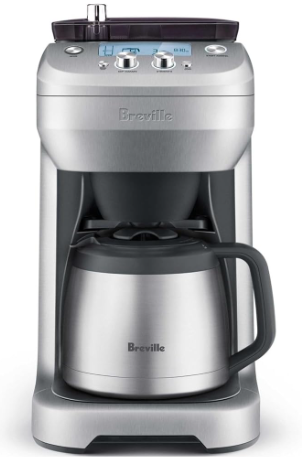The Evolution of Nordic Coffee Culture: A Global Influence on Brewing Norms
BLOG NEWS
9/30/20254 min read


Introduction to Nordic Coffee Culture
Nordic coffee culture is a distinctive phenomenon characterized by its emphasis on quality, sustainability, and a communal experience surrounding the drink. Originating from countries such as Sweden, Norway, Denmark, Finland, and Iceland, this culture has evolved significantly through the centuries, shaped by historical influences and modern-day practices. Traditionally, coffee consumption has held great social importance in Nordic societies, often associated with gatherings and communal activities that foster connections among individuals.
Historically, coffee was first introduced to the Nordic region in the 17th century, with its popularity quickly escalating within the upper classes before penetrating the wider population. Over time, coffee transformed from a luxury item into a staple of daily life. The brewing methods also evolved, with traditional techniques such as the Swedish “kokkaffe” and the Finnish “keittokahvi,” both relying on boiling or steeping processes that produce a rich flavor profile. These methods underscore the Nordic commitment to quality and craftsmanship, as every step of the brewing process is meticulously attended to, reflecting the cultural significance placed on the beverage.
In addition to traditional brewing methods, the contemporary Nordic coffee culture has gained international recognition for its focus on sustainability and ethical sourcing. Many cafés emphasize the importance of utilizing organic beans and transparent trading practices, aligning with broader societal values around environmental stewardship. This dedication to responsibility is complemented by the strong belief in shared experiences. The ritual of enjoying coffee together—whether during a "fika" break in Sweden or a more casual gathering—highlights the social fabric woven through Nordic coffee customs.
The global influence of Nordic coffee culture continues to expand as newer generations adapt these traditional practices while also introducing innovations. This blend of old and new captures the essence of a vibrant coffee culture that reflects both heritage and modern values.
The Rise of Specialty Coffee and Its Nordic Roots
The specialty coffee movement has seen substantial growth over the past few decades, reflecting a global shift in how coffee is perceived and enjoyed. At the heart of this evolution lie the Nordic countries, which have pioneered a unique approach to coffee that emphasizes quality, sustainability, and creativity. Nordic coffee culture has garnered attention for its meticulous methods of sourcing high-quality beans, often directly from farmers who employ ethical practices. This attention to origin ensures that the beans not only taste exceptional but are also grown sustainably.
In addition to sourcing, Nordic coffee culture showcases innovative brewing techniques that have redefined the preparation and enjoyment of coffee. Various Nordic coffee roasters and cafes have adopted methods such as pour-over, Aeropress, and cold brew, effectively enhancing the flavor profiles of their beverages. The focus lies on preserving the distinct characteristics of each coffee type, allowing consumers to experience nuanced flavors that might otherwise be overshadowed in traditional brewing methods. This meticulous approach has not only set a standard for quality but has also influenced global brewing norms.
The result of this dedication and innovation is a rich tapestry of flavors and experiences that resonates with coffee lovers beyond the Nordic region. These principles continue to shape the global coffee scene, encouraging a greater appreciation for the artistry of brewing and the story behind each cup.
Sustainability and Ethical Sourcing in Nordic Coffee
Nordic coffee culture has garnered global recognition, not only for its unique brewing techniques but also for its strong commitment to sustainability and ethical sourcing. Embedded in the cultural fabric of countries like Sweden, Denmark, and Norway, the emphasis on environmentally friendly practices has significantly influenced the coffee industry worldwide. Nordic coffee enthusiasts prioritize high-quality beans sourced from producers who adhere to sustainable agricultural practices, ensuring that their environmental impact is minimal.
The principles of fair trade are central to the Nordic approach to coffee sourcing. By fostering direct relationships with farmers, Nordic roasters can better ensure that these producers receive fair compensation for their work. This model not only supports the livelihood of coffee farmers but also promotes community development in producing countries. Many Nordic coffee brands actively participate in programs that uphold fair trade standards, emphasizing the importance of ethical consumption throughout their supply chains.
Moreover, the integration of sustainability into the coffee supply chain extends beyond sourcing practices. Nordic cafes and roasters often emphasize waste reduction through employing zero-waste strategies. This includes using biodegradable materials for packaging, reusing coffee grounds for various applications, and ensuring that waste is minimized during the brewing process. As a result, the focus on sustainability in the Nordic coffee scene has set a precedent for coffee establishments globally, encouraging them to adopt similar practices.
The influence of this commitment to ethical sourcing and sustainability is evident in the growing consumer awareness surrounding coffee origins. As global consumers increasingly prioritize environmentally conscious choices, many coffee brands are adapting their practices to align with these values. The Nordic coffee culture serves as an inspiring example of how a commitment to sustainability can reshape brewing norms and consumer expectations, prompting a shift toward greater responsibility within the coffee industry as a whole.
Global Impact: The Spread of Nordic Brewing Techniques
The impact of Nordic coffee culture on global brewing norms has been profound, influencing coffee enthusiasts and industry professionals alike. Originating in the Scandinavian region, this culture emphasizes quality, simplicity, and the social aspect of coffee consumption. The adoption of Nordic brewing techniques has proliferated far beyond its borders, as cafes around the world are now incorporating these methods into their offerings. One standout feature of Nordic coffee culture is the emphasis on meticulous brewing with specialized equipment. Tools such as pour-over drippers and Aeropress devices are gaining popularity in global coffee shops, allowing baristas to create flavorful and nuanced coffee experiences.
Moreover, the concept of 'fika'—a designated coffee break that encourages social interactions—is being embraced in diverse environments. This cultural practice not only promotes the enjoyment of coffee but also fosters connections among individuals, a practice that resonates with many who seek to incorporate mindfulness into their hectic lives. As coffee culture evolves, this notion of taking time to appreciate each other and the beverage itself has sparked an interest in creating communal spaces centered around coffee breaks.
Looking to the future, the integration of Nordic techniques within a global context hints at continued evolution. Brew methods, flavor profiles, and the ritualistic aspects of coffee consumption are expected to adapt as baristas experiment with Nordic principles. The cross-pollination of ideas through the interconnectedness of coffee communities offers endless possibilities for innovation. As enthusiasts share their experiences and techniques via social media platforms, this exchange promotes a collective appreciation for different cultural expressions of coffee. As a result, the global coffee landscape becomes a richer tapestry, drawing from Nordic traditions while also evolving on its own terms.
One of our most favorite coffee makers...
Breville BDC650BSS Grind Control, Silver


Click 'Shop Now!' to find on Amazon now....
Disclosure: This post contains affiliate links. If you click and make a purchase, I may earn a small commission at no extra cost to you.
Specs
The Breville Grind Control BDC650BSS is a drip coffee machine with an integrated burr grinder and a number of programmable features. The water tank capacity is around 60 oz (roughly 12 cups), and the bean hopper holds about ½ lb of beans. It has an adjustable grinder with multiple grind settings, and also allows you to use pre-ground coffee. There’s an LCD display that shows info like grind size, strength, number of cups, and also offers a timer/auto start so you can program when the brew should begin. It uses a thermal, dual-wall stainless steel carafe, which helps keep the coffee hot without needing a warming plate. In terms of size, it measures roughly 8.5 × 12.5 × 16.3 inches (depth × width × height) and is comparatively heavy—solid build quality with metal/stainless finishes. It has strength control (multiple strength settings), small-batch mode, programmable settings, auto shut‑off, and indicators when cleaning or descaling is recommended.
Pros and Cons
Pros
Offers great freshness: Beans are ground immediately before brewing, which helps preserve aroma and flavour.
High level of customisation: You can adjust grind size, choose strength, pick how many cups, and schedule auto‑start.
Thermal carafe: keeps coffee hot for a long time without needing a hot plate, which is better for flavour and safety.
Big capacity: both for beans and water (large hopper, large tank), which means less frequent refilling for households.
Good build and stylish design: stainless steel finish looks premium, controls and display are relatively intuitive.
Cons
Cleaning and maintenance are more involved: the grinder chute, basket, hopper etc. need frequent cleaning to avoid clogging or stale grounds.
Grind fineness limits: achieving very fine grinds (like for espresso) is inconsistent or not possible; the machine isn’t made for espresso.
Carafe pour/drape issues: some users report that the carafe drips when pouring, or leaves mess due to design.
Noise: the grinding is fairly loud, and the process of grind + brew is more involved than simple drip machines.
Size and footprint: fairly large and bulky, takes up counter space; weight and height mean more care in placement.
Cost: higher price than simple drip machines; plus more cost in maintaining (descaling, replacing filters etc.).
Our Review
We’ve used the Breville BDC650BSS for a few weeks in regular daily use, and overall it delivers an excellent mid‑to high‑end drip‑coffee experience. What stands out is the convenience of having the integrated grinder: it really does make a difference in terms of flavour when using fresh beans. The strength and grind controls give enough leeway to adjust for different beans, roast levels, or personal taste. Brewing a full carafe feels solid, and the thermal carafe does a good job keeping coffee hot for hours without degrading the flavour as quickly as a hot plate would.
The display and timer are helpful features — being able to program a morning brew or set small‑batch mode without wasting water or over‑brewing adds real value. The aesthetics are clean; the stainless steel finish gives it a premium feel, and the machine seems well put together.
On the flip side, the effort required to keep it running smoothly is higher than for a simpler machine. The grinder chute tends to get clogged, especially if you use oily or dark roast beans, so regular cleaning is essential. The drip/carafe pour issues do get irritating — you sometimes need to pour carefully or wipe drips afterward. And while the strength settings are useful, there’s a trade‑off: finer grind isn’t as precise, so for someone who wants espresso or very fine grind textures, this won’t replace a dedicated grinder or espresso machine. Also, cost of ownership is higher, both up front and in upkeep.
In sum, if you are someone who drinks multiple cups a day, cares about flavour and freshness, and don’t mind spending a bit more effort/attention, this machine is excellent. If you prefer something “set‑and‑forget”, very low maintenance, or want espresso capability, it may be more than needed or may disappoint in those areas.
Other Customer Reviews
From what people who own it tend to say:
Many praise the flavour and temperature of the brew. Users often comment that the coffee stays hot well, thanks to the thermal carafe, and the freshness of grinding just before brewing is repeatedly mentioned as a strong plus. The ability to make a full carafe (12 cups) is appreciated, especially by larger households.
However, several consistent frustrations come up. One is clogging or “grounds getting stuck” in the grinder chute, especially with oily beans. Another is that the grind settings can be inconsistent — some batches come out coarser or finer than expected. Also, the carafe seems to drip or spill unless poured carefully; the design of the spout isn’t perfect according to some. Some users also report problems with durability: complaints about parts failing over time (hopper release, seals, controls), and that the custom settings (e.g. grind calibration or timer) sometimes reset after power outages or fluctuations. Many say if you don’t clean it often, performance deteriorates — stale grounds, clogging etc. Some people love theirs years later and say it’s lasted well; others feel later builds are less durable than older ones.
